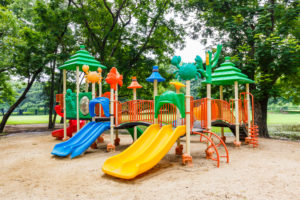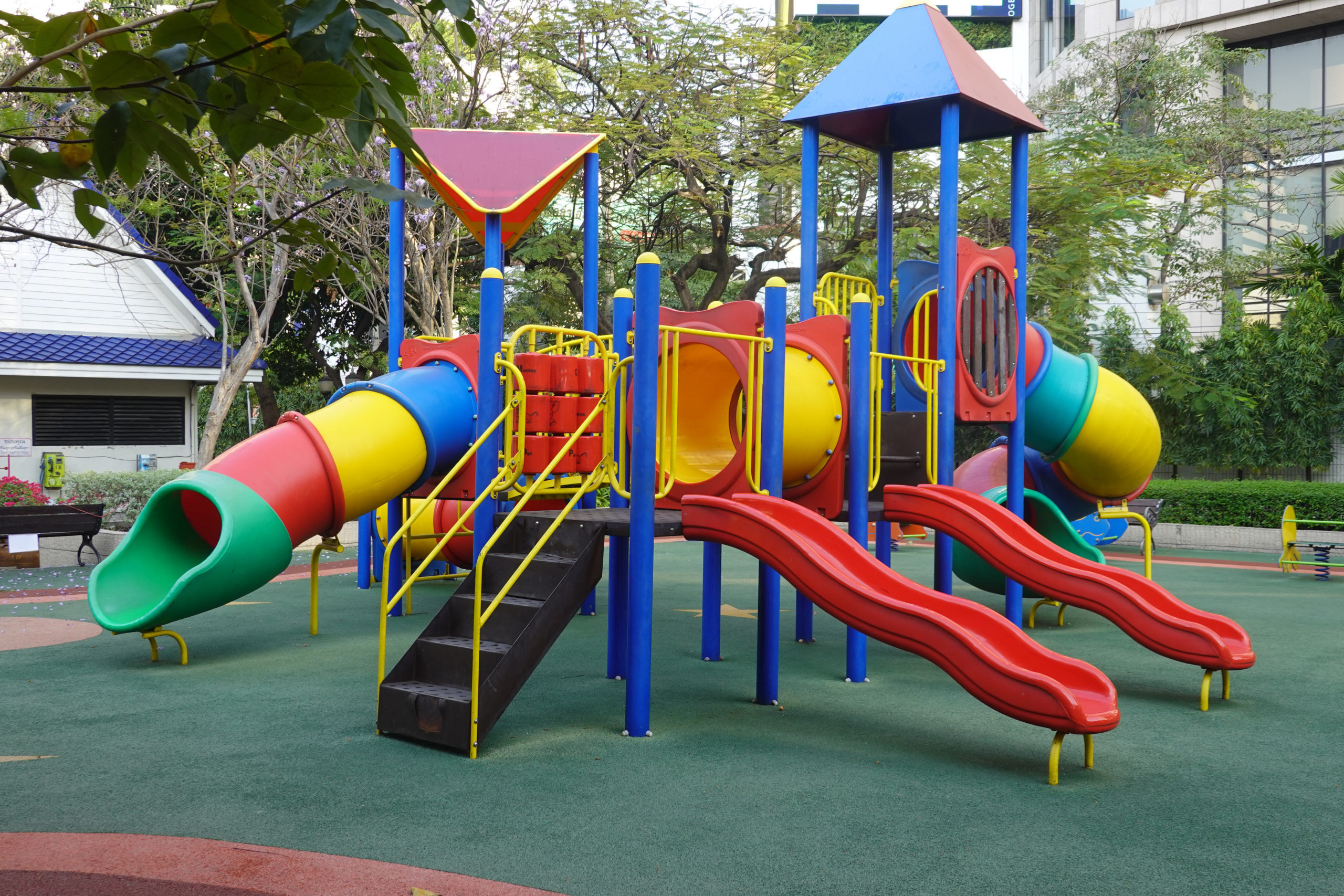With spring around the corner, younger children will be taking to playgrounds all over Ontario, to get in a little fun, exercise and fresh air.
Unfortunately, a small portion of those children will also be taking a trip to the ER of their local hospital, with injuries ranging from minor cuts all the way up to broken bones, concussions, and more.
According to the Canadian Public Health Association (CPHA), the most recent data, from 2016, shows that nearly 2,000 children a year required hospitalization due to playground injuries. In 2014-15 there were 500 ER visits for brain injuries suffered on playgrounds by children under the age of 18. That’s nearly double the amount from just a few years earlier (269 in 2010-11). Falls are the most common cause of all serious playground injuries.
The Canadian Standards Association (CSA) has established a number of safety standards that playgrounds and play equipment must adhere to. Oftentimes, it’s up to parents and the local communities to ensure that playgrounds meet the CSA standards.
Let’s have a look at the 5 top tips for ensuring your child stays safe in their next playground visit.
- CSA Standards
Look for signs indicating that the equipment meets CSA standards, and that age-appropriate ranges are posted.
Often, equipment that is safe for children of a certain size or age might not be safe for others.
- Maintenance
Make sure the equipment seems to be properly maintained, and in good repair. Any loose connections with the ground, or other loose bars, etc. can lead to serious falls.
Wet equipment (i.e. after a rainfall) should be avoided, as slippery surfaces can lead to falls.
What is the safest surface for playground safety?
- Playground surfaces
The ground under the equipment should be made of sand, pea gravel, wood chips or rubber. These softer surfaces will help to absorb the impact should your child fall to the ground.
According to the CPHA, one study showed that the odds of being injured in falls on harder surfaces like concrete were 2.28 times that of falls onto softer, impact-absorbing surfaces. The same study also showed that children had 50% less risk of injury on rubber surfaces compared to wood/bark surfaces and 80% less than on concrete surfaces.
In addition, ensure that the ground is clear of impediments that could lead to injury, such as nearby backpacks or bikes, or even broken glass or other garbage.

- Equipment height
According to a study, the height of the playground equipment correlated significantly with the number of fractures from falls
Other studies have shown that injuries are far more likely from falls exceeding 1.5-2m in height. In fact, a study of Montreal playgrounds found that injuries were more than twice as likely on equipment exceeding two metres in height.
When the CSA first recommended guidelines for playground equipment in 1990, there were no recommended fall height restrictions. This was amended in 2007, but only for newly-constructed equipment. It did not apply to equipment previously installed before the amendment.
According to KidsHealth.org, the highest rate of injuries on public playgrounds are seen with climbing equipment. Make sure the height doesn’t exceed the CPHA recommended levels of a maximum 1.5m.
Playground parents should always be attentive
- Adult Supervision
Especially important for younger children, ensure that there are clear lines of sight for adults to watch the children on the equipment.
The CPHA notes that “children’s behaviours” are a contributing factor to serious injuries on playgrounds. Therefore it’s imperative that adults are able to properly observe the children, and intervene in the case of any dangerous behaviours such as pushing or other types of roughhousing
As noted by Caring For Kids, if you do have concerns about the safety of your local playground, you should contact the playground’s operator. Parachute provides safety checklists. In addition, you can even have a certified expert inspect the playground to look for dangers.
If your child has suffered a serious injury due to negligence at a playground, contact Horowitz Injury Law for a free consultation. We have 35 years of experience dealing with such injuries, and we can help you and your family obtain the help and the compensation that you deserve. Call us at 416-925-4100.




